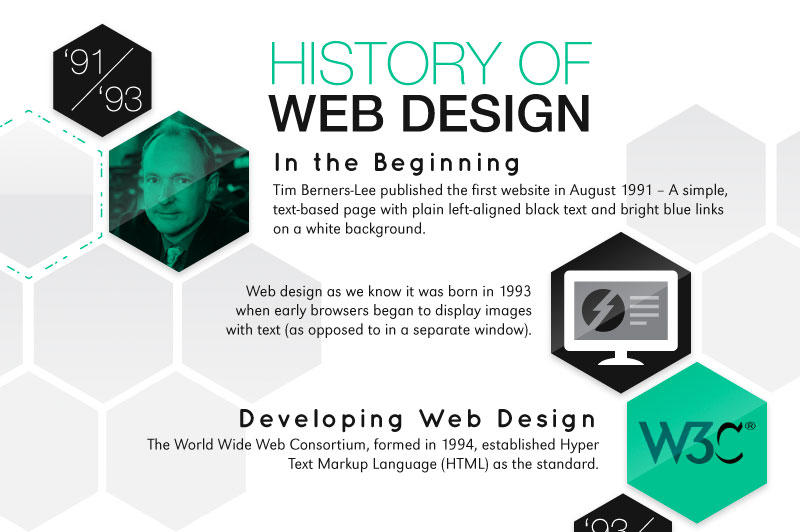The Growth Of Web Design: After That And Currently
The Growth Of Web Design: After That And Currently
Blog Article
Authored By-Hartley Bojesen
In the past, websites were straightforward and focused on details. Navigation was direct, and design was for desktop computers. Now, individual experience is key. Data overviews designs for simple navigation. Receptive formats fit different gadgets. Today, dark mode reduces strain, and minimal food selections improve navigating. Interactive attributes involve users, and vibrant visuals stick out. AI assimilation increases interaction. See exactly how design has actually evolved to improve your on the internet journey.
Early Days of Web Design
In the early days of website design, simpleness preponderated. Websites were basic, with restricted shades, typefaces, and layouts. The focus was on offering information as opposed to flashy visuals. Customers accessed the web with slow-moving dial-up connections, so speed and performance were vital.
Navigating menus were straightforward, commonly located at the top or side of the web page. Web sites were made for desktop, as mobile surfing had not been yet prevalent. Content was king, and developers prioritized very easy readability over complicated style components.
HTML was the key coding language made use of, and designers needed to function within its restrictions. Computer animations and interactive attributes were minimal compared to today's requirements. Sites were static, with little vibrant material or individualized individual experiences.
Surge of User-Focused Style
With the development of web site layout, a shift in the direction of user-focused design principles has ended up being progressively noticeable. Today, developing sites that prioritize individual experience is essential for involving visitors and achieving organization goals. User-focused layout involves comprehending the requirements, choices, and habits of your target market to tailor the website's layout, web content, and includes appropriately.
Developers now perform detailed research, such as user studies and usability testing, to gather insights and feedback directly from users. This data-driven approach assists in producing instinctive navigation, clear calls-to-action, and visually attractive interfaces that resonate with visitors. By putting the user at the facility of the layout procedure, internet sites can supply a more tailored and pleasurable experience.
Receptive design has actually likewise become an essential element of user-focused style, making certain that web sites are optimized for different devices and screen dimensions. This adaptability boosts ease of access and usability, dealing with the varied ways customers interact with internet sites today. Essentially, the surge of user-focused style symbolizes a shift towards developing digital experiences that focus on the requirements and expectations of the end customer.
Modern Trends in Web Design
Discover the most up to date patterns shaping website design today. One noticeable trend is dark setting design, providing a streamlined and contemporary appearance while lowering eye strain in low-light settings. https://www.fool.com/the-ascent/small-business/email-marketing/articles/small-business-marketing/ is minimal navigating, streamlining food selections and enhancing customer experience by focusing on essential elements. Integrating micro-interactions, such as animated switches or scrolling results, can develop a much more appealing and interactive web site. Responsive style stays essential, ensuring seamless individual experiences throughout different tools. Additionally, using bold typography and unbalanced designs can include aesthetic interest and accentuate certain web content.
Incorporating AI modern technology, like chatbots for consumer support or customized suggestions, improves individual interaction and streamlines processes. Access has likewise end up being a considerable trend, with developers focusing on inclusive style practices to deal with diverse user demands. Welcoming sustainability by optimizing internet site efficiency for rate and performance is another emerging fad in web design. Working together with customer responses and data analytics to iterate and improve design continuously is necessary for remaining relevant in the ever-evolving digital landscape. By embracing these modern trends, you can develop a visually appealing, straightforward website that resonates with your target market.
Final thought
As you reflect on the development of site style from the early days to currently, you can see exactly how user-focused style has actually ended up being the driving force behind modern trends.
Embrace the journey of adjustment and adjustment in web design, constantly keeping the individual experience at the leading edge.
Tippingpointdigital
Remain present with the latest trends and technologies, and never stop developing your approach to develop visually spectacular and straightforward sites.
Progress, adapt, and create - the future of website design remains in your hands.
